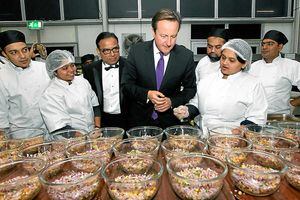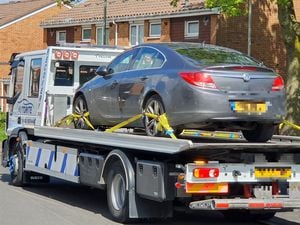Tastiest dishes in the spotlight at British Curry Awards
When Sake Dean Mahomed opened Britain's first curry house way back in 1810, he probably wished he hadn't bothered writes Mark Andrews.

His Hindoostanee Coffee House lost money from the start. His spicy dishes proved a miserable failure with the buying public. And his business closed 12 months later.
However, despite these inauspicious beginnings, there are many thousands of people across Britain who must surely be very glad that he did.
Today, the curry industry is big business indeed. Last night's British Curry Awards attracted 40,000 nominations.
Around 25 million curried dishes are consumed in Britain every week, with around 10,000 curry restaurants and takeaways across the land.
Together they employ 80,000 people and contribute a staggering £3.6 billion a year to the economy.
No wonder David Cameron describes it as Britain's national dish.
The Prime Minister, who was guest of honour at last night's ceremony, said curry had become part of the British identity and promised the Government would help tackle the industry's immigration-related problems, as it sought to recruit from countries like India, Pakistan and Bangladesh.
"Like any industry, this one faces its own specific challenges and I know that there have been questions on immigration and getting chefs with the necessary experience," he said.
"So let me promise you this – we will work through this together. We'll continue to help you get the skilled Asian chefs you need."
The Prime Minister also vowed to invest in training home-grown chefs through apprenticeships and scholarships.
The Five Rivers A La Carte in Walsall has spent the past year basking in the success of being named Midland Newcomer of the Year award.
Director Shamim HM said it was a big surprise when TV personality Jenny Bond announced it as the champion 12 months ago, as the restaurant had then only been trading for two years.
"I think the reason that British people love Indian cooking is that meal times are great family occasions," she says.
"Indian food can look very difficult to prepare to begin with, with all the different spices, but once you become more experienced at it and you follow a recipe, it gets much easier and you can start experimenting. With a bit of practise, anybody can do it."
Last night's awards were packed with MPs, celebrities and gourmets.
The British have certainly taken curries to their hearts. There are now more curry restaurants in London than in Bombay or Delhi, and Britain even sells its brand of curry back to India.
Raj Rana, from Itihaas in Birmingham which won the Midlands award last year, says one of the reasons the British love Indian cooking is the way it appeals to the senses.
"It tantalises all five senses, it appeals to the eye, there is the texture, and there is the fragrance and aroma. I think the spices are also quite addictive."
Winning prizes such as this does a lot to raise a curry house's profile, he claims.
"It opens us up to a national, rather than a local audience. Now if people are visiting the ICC or the NEC, we go straight to the top of the list, so we're getting people from Scotland and Manchester, which is nice."
Harun Miah runs the Blue Ginger restaurant in Bridgnorth. He says: "Curry goes down well with everyone, adults and children. There are so many different types and varieties. It used to be fish and chips which everybody bought for a takeaway meal, now it's chicken masala."
TV chef Heston Blumenthal believes that in some respects the British curry trade is now advanced of that on the Indian subcontinent.
He says: "I went to India a few years ago to make a programme about chicken tikka masala. What I found was that dishes from over here that people would perhaps say are not authentic are now being copied over there."
Looking back, it seems hard to believe that Sake Dean Mahomed's coffee house was a flop. Anglo-Indian Edward Palmer had more luck 14 years later when he opened his restaurant, the Veeraswamy, at the British Empire Exhibition of 1924. It proved so popular that he moved it to London's Regent Street, where it continues to do a roaring trade.
Yet in the conservative world of inter-war Britain, the great British curry still took a while to catch on.
By 1939, there were still only six curry houses in Britain, but the upheaval of the war, and the giant task of rebuilding Britain afterwards soon changed all that.
Postwar reconstruction brought in hordes of migrant workers, opening up canteens and cafes to feed their families. But curious natives soon developed a taste for their exotic foods at a time when rationing was still very much in force.
By 1982 there were 3,500 curry restaurants in Britain, a figure which has grown threefold since then.
Many of the dishes that are popular today are unheard of in India. Chicken tikka masala, for example, was a British creation, devised when a chef added tomato and onion paste to grilled chicken. It was unknown in India until the 1990s when British companies began exporting it.
"Ninety-five per cent of Indians don't know what a vindaloo, jalfrezi or a madras curry is," says cookery writer Camellia Panjabi.
Today, two thirds of Britain's eating out is in curry restaurants, where people spend £5million a day and eat 205 million poppadoms every year.
Which goes to show. When it comes to dining out, some Brits like it hot. Very hot indeed.





